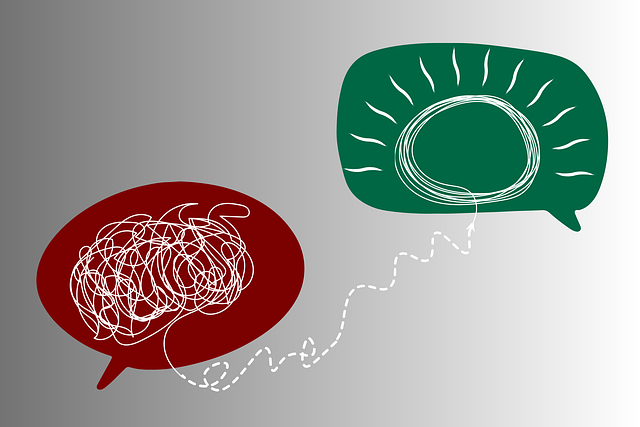Public awareness campaigns utilizing compelling narratives and interactive platforms play a vital role in educating communities about mental health issues, including phobias. By dispelling myths, highlighting successful recovery stories through mindfulness and evidence-based practices, these campaigns reduce stigma and inspire hope. Tailoring messages to diverse audiences based on age and preferences is crucial, as is fostering emotional intelligence and open conversations about mental illness. Effective content humanizes the journey of overcoming phobias and educates on therapy methods. A multi-channel approach combining digital and traditional strategies ensures maximum impact. Measuring campaign success through pre-post surveys and behavioral outcomes is key to refining interventions for improved therapy access.
Public awareness campaigns play a pivotal role in educating communities and fostering support for various causes, including therapy for phobias. This article delves into the strategic development of such campaigns, exploring their profound impact on societal understanding. We’ll guide you through essential components, from identifying target audiences to designing engaging content that tackles phobia-related barriers. Additionally, we’ll discuss effective communication channels and methods to measure the success of these initiatives.
- Understanding Public Awareness Campaigns: Their Role and Impact
- Identifying Target Audiences for Effective Therapy Communication
- Designing Compelling Content: Overcoming Phobia-Related Barriers
- Choosing the Right Channels to Reach Your Audience
- Measuring Success: Evaluating the Effectiveness of Public Awareness Initiatives for Phobias
Understanding Public Awareness Campaigns: Their Role and Impact

Public awareness campaigns play a pivotal role in educating and empowering communities about various issues, including mental health concerns. These initiatives serve as a powerful tool to dispel myths, promote understanding, and encourage individuals to seek therapy for phobias or other mental wellness challenges. By utilizing compelling narratives, visual media, and interactive platforms, campaigns can reach wide audiences and foster meaningful conversations.
In the context of emotional healing processes, these campaigns contribute significantly to shaping public perceptions and reducing stigma associated with seeking help. They often highlight successful recovery stories, emphasizing the effectiveness of mindfulness meditation techniques and other evidence-based practices in managing and overcoming mental health barriers. This strategic approach has the potential to inspire hope and encourage individuals to take proactive steps towards improving their mental wellness.
Identifying Target Audiences for Effective Therapy Communication

Identifying target audiences is a crucial step in designing effective public awareness campaigns for therapy and mental health support. When it comes to addressing specific issues like phobias, tailoring messages to resonate with diverse groups is essential. Different demographics may have varying levels of understanding and openness towards seeking therapy. For instance, younger audiences might be more receptive to digital outreach through social media platforms, while older generations may prefer community-based events or word-of-mouth recommendations.
Understanding the mental health landscape involves recognizing that fear and anxiety disorders, including phobias, impact people from all walks of life. Effective campaigns should aim to reduce the stigma associated with seeking therapy for these issues. By promoting emotional intelligence and encouraging open conversations about mental illness, audiences can be educated on the benefits of therapy. This, in turn, fosters a supportive environment where individuals feel empowered to take charge of their emotional well-being, whether it’s managing mood disorders or overcoming specific phobias.
Designing Compelling Content: Overcoming Phobia-Related Barriers

Designing engaging content for public awareness campaigns about therapy for phobias requires a nuanced approach to overcome barriers and encourage participation. Phobias often stem from intense, irrational fears that can significantly impact an individual’s daily life, making them reluctant to seek help. Content creators must address these fears directly, presenting therapy as a safe and effective solution. Storytelling techniques, personal narratives, and testimonials can humanize the experience of overcoming phobias, fostering empathy among the target audience.
Incorporating educational elements is vital to dispelling myths surrounding therapy for phobias. Providing clear explanations of different therapeutic modalities, such as cognitive-behavioral therapy (CBT) or exposure therapy, ensures that individuals understand the process and are more receptive to its benefits. Community outreach program implementations, social skills training, and risk assessment tools for mental health professionals can further enhance trust and accessibility, encouraging those with phobias to take the first step towards recovery.
Choosing the Right Channels to Reach Your Audience

When designing a public awareness campaign for therapy, whether targeting specific phobias or promoting mental health generally, selecting the most effective channels to reach your audience is paramount. Understanding where your target demographic spends their time and how they prefer to consume information is crucial. For example, younger audiences often engage heavily on social media platforms like Instagram and TikTok, whereas older generations might be more receptive to radio advertisements or print media.
Integrating a multi-channel approach that combines digital strategies (social media, online ads) with traditional methods (posters, events) can maximize impact. This allows for targeted messaging tailored to different demographics and encourages positive thinking while offering solutions like stress reduction methods and mood management techniques. By choosing the right channels, campaigns can effectively dispel myths surrounding therapy, encourage people to seek help, and foster a more supportive and understanding societal atmosphere.
Measuring Success: Evaluating the Effectiveness of Public Awareness Initiatives for Phobias

Measuring success is a critical aspect of evaluating the effectiveness of public awareness initiatives for phobias. The primary goal of such campaigns is to raise consciousness, reduce stigma, and encourage individuals to seek therapy for phobias, thereby promoting emotional well-being. To gauge success, it’s essential to adopt robust evaluation methods that go beyond simple reach or participation metrics. These methods should include pre-post surveys to assess changes in knowledge, attitudes, and intentions related to phobias.
Moreover, the impact of campaigns on behavioral outcomes, such as increased help-seeking behavior and improved emotional regulation, should be considered. Incorporating crisis intervention guidance within awareness initiatives can provide immediate support for individuals experiencing intense anxiety or panic due to their phobia. By meticulously evaluating these aspects, public health officials and campaign organizers can refine strategies, tailor interventions to specific needs, and ultimately enhance the overall effectiveness of therapy for phobias.
Public awareness campaigns play a pivotal role in educating and empowering individuals, particularly those seeking therapy for phobias. By understanding target audiences, crafting compelling content, and utilizing suitable communication channels, these initiatives can significantly enhance the reach and effectiveness of mental health services. Measuring success through evaluation ensures that resources are allocated efficiently, fostering a more inclusive and informed society. With continuous refinement based on data-driven insights, public awareness campaigns have the potential to revolutionize therapy for phobias, breaking down barriers and promoting well-being on a broader scale.









